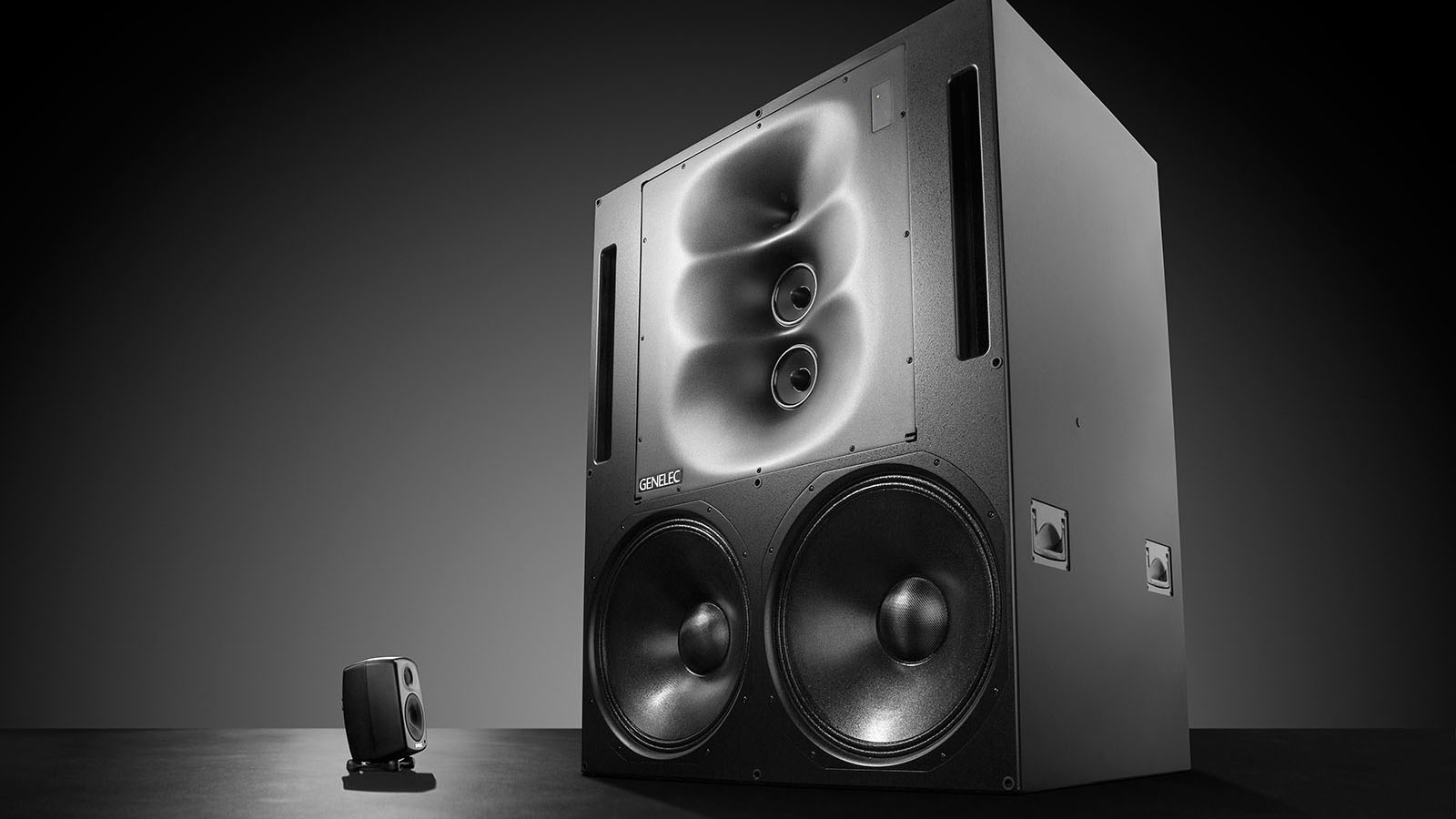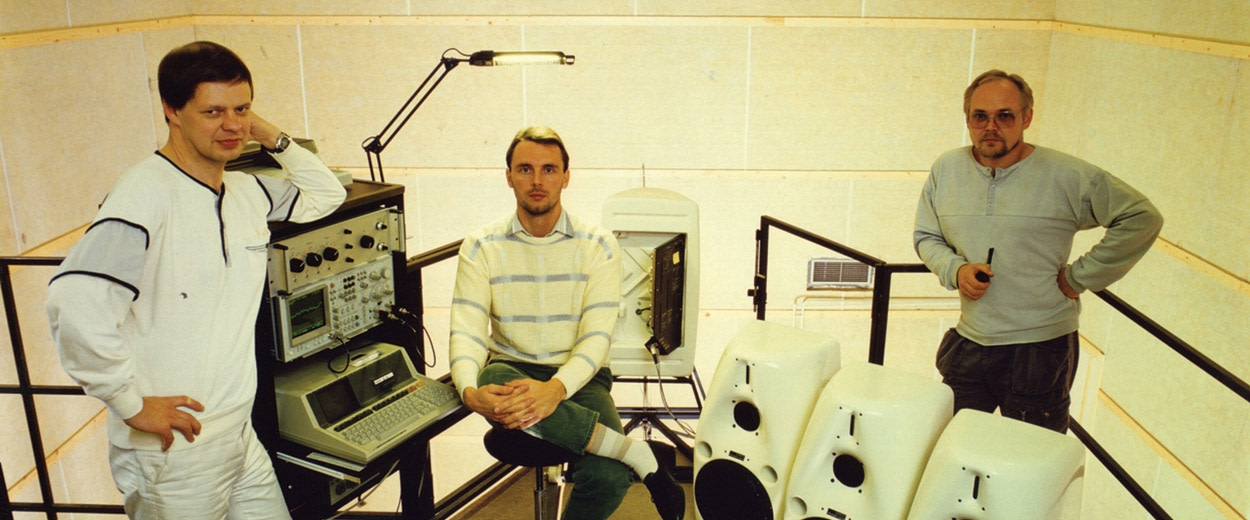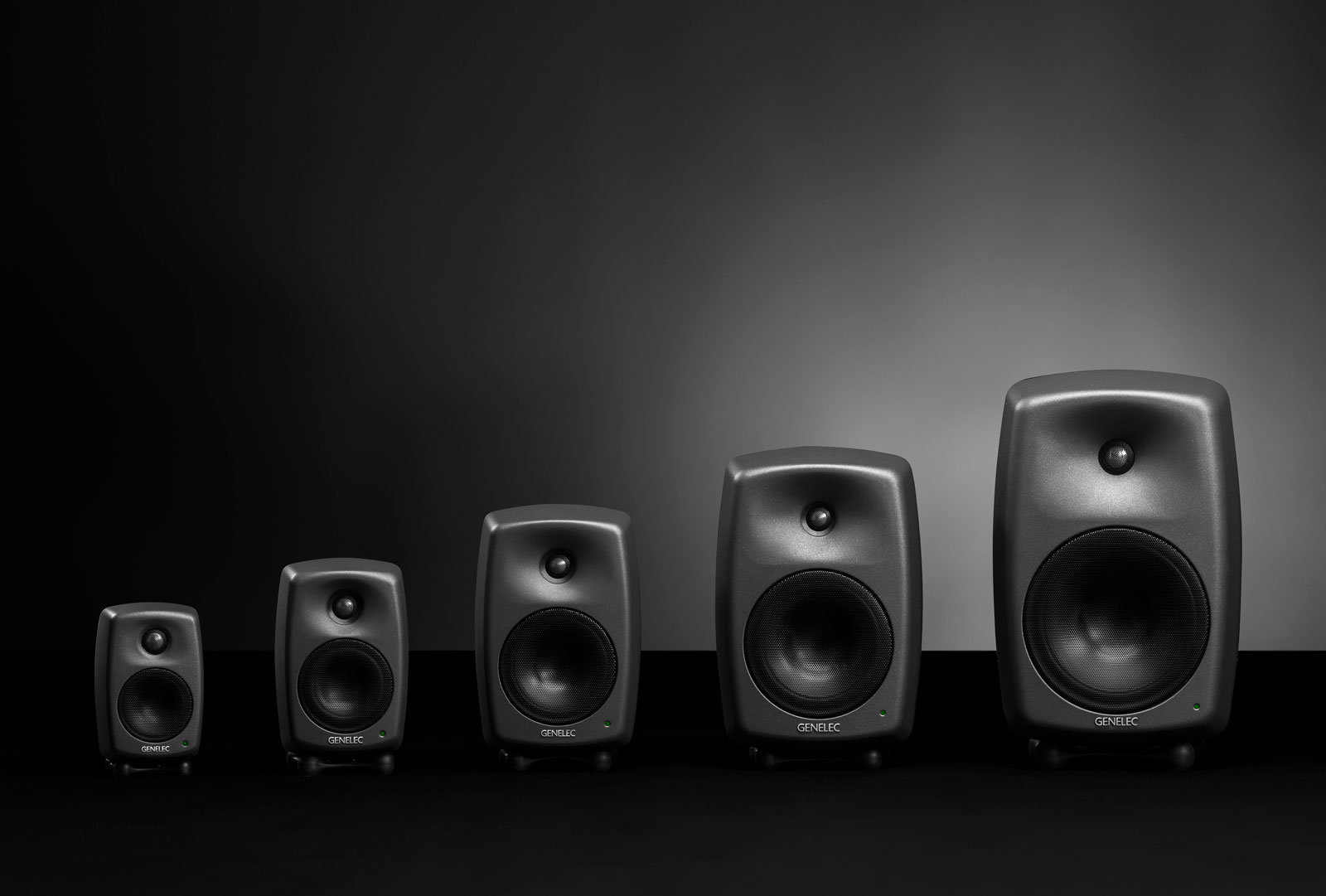Genelec's iconic speakers have been helping producers level-up their monitoring for over 40 years

It’s a well-worn piece of advice that a quality set of monitor speakers is the most important thing a musician can invest in for their home studio. You can have a killer recording chain and the latest mixing plugins, but it’s all for nothing if you can’t trust the sound coming from your speakers.
Finding the right monitors for your setup can be a minefield of confusion though; there’s seemingly no end of styles and features out there, and it’s simply not true that bigger and more expensive is always better.
Since 2004, Genelec’s classic 8000 series has been catering to the needs of music-makers with a range of sizes and industry-leading technologies. Instantly recognisable for their curved shape and distinctive stands, the 8000s have become commonplace in the studios of pros and amateurs alike. So what’s the story behind them?
Genelec was born in 1976 when Ilpo Martikainen and Topi Partanen – two Finnish post-grad students with a shared enthusiasm for sound and electronics – were commissioned to create an active loudspeaker for Finnish national broadcaster YLE. After two years of research and development, the Genelec Oy S30 was released in 1978.

The 8000 series is built on technology developed and refined by Genelec in the decades since then. The die-cast aluminium housing – first seen on the 1029A in 1996 – coupled with the curved shape, allows the 8000s to produce loud but clear sound despite their relatively diminutive size.
It’s more than just their shape and style that makes these loudspeakers special though; let’s take a look at some of the key technologies that have helped make these monitors modern classics.
Three features that define Genelec's 8000 Series
Directivity Control Waveguide
First developed in 1983, Genelec’s DCW approach is all about minimising interference coming from the speaker cabinet. As its name suggests, this is done by ‘guiding’ the waveforms as they’re emitted from the driver.
So why is this important? By controlling the way the sound is dispersed, Genelec speakers can create a wide and uniform listening area. In layman's terms, this means that as you move around in your listening position, the sound coming from your monitors is reliable and consistent over a larger area of the space.
Minimum Diffraction Enclosure
The rounded shape of the 8000 series is more than just a sleek Scandinavian design touch. Developed with award-winning industrial designer Harri Koskinen, the shape of the 8000s’ speaker cabinets has been scientifically calculated to reduce diffracted sound energy around the front of the speakers.
This keeps unwanted build-up within the speaker cabinet rather than muddying the direct sound coming out of the monitors. Put simply, this means a clearer and more reliable sound for the listener.
Iso-Pod Stand
To state a somewhat obvious point, sound travels. Not just through the air, but through solid objects. Anyone that’s lived in a flat with noisy upstairs neighbours is certainly fully aware of this. The point being, if you place a set of speakers directly on a solid object like a desk, you’re not only transmitting sound through the air towards the listener, but also into whatever object your speaker is connected to – which is more than likely to muddy the sound.
The Iso-Pod Stand is Genelec’s solution to this problem. This effectively decouples the monitors from whatever surface they’re placed on, drastically reducing the amount of vibrations passed between the speaker and the surface. Not only this, they also allow you to adjust the angle and tilt the speaker by up to 15 degrees towards your listening position. (And they just happen to look pretty smart too!)
Get to know the range
Genelec’s classic 8000 range comprises five models – the 8010, 8020, 8030, 8040 and 8050. So what’s the difference? The short answer is size.

The 8010As are the smallest monitors in the range, a brilliantly compact speaker that can squeeze into even the smallest production setups. Things move up to the 8050Bs at the top-end, which are considerably larger, but also louder and with more bass extension.
Is it true that you should just buy the biggest monitors you can afford? In reality it’s not quite so simple. When choosing monitors the most important things to consider are the size of your space and your likely listening distance.
For differently sized monitors the ‘sweet spot’ – where the speaker is delivering its optimum sound to the listener – will be at varied distances from the monitors themselves, so it’s important to choose the model that best suits your room and where you’ll be working.
Check out Genelec’s handy guide to choosing the right monitors for a great starting point. It’s an essential resource for anybody unfamiliar with terms like SPL or frequency response and unsure of how they might affect their choice.
Get to know the full specs of the whole 8000 range over at the Genelec site.
Placement is everything
Choosing the right set of monitors is vitally important, but correct placement plays a massive role too. At the most basic level, it’s important to make sure that a pair of monitors are placed and angled in order to create the optimum listening experience at the position where you’ll be most regularly working in your studio.
There’s much more to monitor placement than simply pointing the speakers in the right direction though. Factors such as your listening position within a room and distance between your monitors and any walls can affect things such as sound pressure, the phase relationships between reflections and the way resonances form in your studio space.
It might sound daunting, but downloading Genelec’s monitor placement guide will provide a clear and detailed walkthrough of how to achieve the best possible listening experience in your studio space.
For those looking to take things to the next level, Genelec’s Smart Active Monitoring (SAM) range – and the accompanying GLM calibration software – allow producers to achieve a perfect monitoring experience even in tight and tricky spaces. We took the SAM system for a spin last year, find out how we got on.
Want all the hottest music and gear news, reviews, deals, features and more, direct to your inbox? Sign up here.